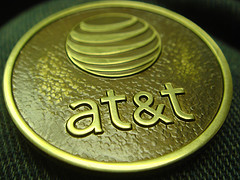AT&T & T-Mobile: Already Married in Technology


As Glenn Fleishman, wireless networking expert, points out in his latest blog, "One of the dirtiest barely secrets of the modern mobile cell world is that AT&T doesn't really have national 2G coverage, much less 3G. AT&T leans on T-Mobile for a large number of areas it never spent to cover. This stems from an agreement years ago when AT&T Wireless consolidated on GSM service, and T-Mobile was building out its initial GSM service. In 2004, the companies dissolved a cooperative agreement (when Cingular bought what was then AT&T Wireless), but roaming never disappeared."
Fleishman continued, "This lack of coverage is why AT&T didn't offer feature phone or smartphone service in large parts of the country outside urban areas. … AT&T also gets the depth of T-Mobile's spectrum portfolio in dense markets where AT&T clearly lacks the ability to deliver service to the level needed, such as New York City's boroughs and San Francisco. It won't be trivial to integrate the networks, but many carriers co-locate equipment with tower and building owners. And if they maintain the current deal and roaming is no longer a for-fee arrangement, AT&T can instantly get the benefit."
The two have also long been working together on their Wi-Fi offering. Odds are that if you were using T-Mobile Wi-Fi, your signal was actually being picked up by AT&T access points (AP)s and being routed over AT&T's share of the Internet.
Besides already working closely together operationally, both AT&T and T-Mobile are also the only two U.S. mobile phone companies that use Global System for Mobile Communications (GSM) for telephony. Both companies also use High Speed Packet Access (HSPA)for 3G data networking.
The pair has also been using HSPA+ (High Speed Packet Access Plus) aka HSPA Evolution and Evolved HSPA for "4G" data networking.
I put 4G in quotes because there's more than a little debate about whether any current wireless data technology is actually 4G. And, even though future iterations of Worldwide Interoperability for Microwave Access (WiMAX) and Long Term Evolution (LTE) have been approved as 4G, no one has given HSPA+ this blessing. Mind you, it won't stop AT&T from advertising their "4G" network.
Eventually, AT&T and T-Mobile, which is already being called T-Mo, will move to LTE, but I don't see this happening anytime soon. In the meantime, speed-happy mobile users will remain stuck in the LTE+ lane. Of course, at this point, there's more hype than there is speed in everyone's 4G claims.
The current joke going around runs: "AT&T is getting married to T-Mobile. There will be no reception afterwards" It's funny, but technically speaking it won't be true. As ABI Research senior analyst Mark Beccue says, "It is most likely a good thing for current AT&T mobile customers as network coverage and quality should improve with the addition of T-Mobile's cell sites." Technically and as far as infrastructure goes, the two should do well together. After all, they already are. If the deal goes through Sprint should be very worried.